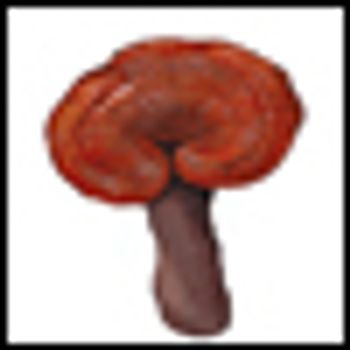
Shortening the course of whole-breast irradiation aft er lumpectomy from fi ve weeks to three can improve convenience and cut costs without sacrificing results, according to research from McMaster University in Hamilton, Ontario.

Your AI-Trained Oncology Knowledge Connection!


Shortening the course of whole-breast irradiation aft er lumpectomy from fi ve weeks to three can improve convenience and cut costs without sacrificing results, according to research from McMaster University in Hamilton, Ontario.

ORLANDO-The therapeutic pathways used for chronic myeloid leukemia patients with suboptimal response to 400 mg/d imatinib (Gleevec) tend to vary, despite the existence of NCCN clinical practice guidelines.

Society survey turns up fuel for fight against Medicare cuts.

Yet oncology drugs account for only 10% of overall U.S. spending on healthcare.

ORLANDO-The headlines declaring bevacizumab’s inability to deliver in colorectal cancer did right by the nattering nabobs of negativity:

ORLANDO-In a head-to-head comparison, two common regimens for metastatic breast cancer matched up, though the difference in toxicity profiles may give capecitabine (Xeloda) the edge over gemcitabine (Gemzar). The results “suggest that gemcitabine/docetaxel (Taxotere) followed by capecitabine at progression may be preferable,” said lead author Andrew Seidman, MD, of Memorial Sloan-Kettering Cancer Center, New York.

Micromet’s BiTE antibody blinatumomab (MT-103) elicits a high response rate in acute lymphoblastic leukemia patients with minimal residual disease, according to the Berlin-based company. The German Multicenter Acute Lymphoblastic Leukemia Study Group (GMALL) presented phase II clinical data involving the drug at the 2009 Congress of the European Hematology Association in Berlin.

Novartis’s Afinitor (everolimus) tablets shrank tumors in half for 33% of patients with relapsed non-Hodgkin’s lymphoma and Hodgkin’s disease, according to the firm. A phase II, open-label trial of 145 lymphoma patients was presented at the 2009 EHA in Berlin.

Genzyme updated information for their CLASSIC II investigational study on Clolar (clofarabine). The estimated median overall survival data was 72 weeks for patients achieving complete remission, the company said.

AstraZeneca and Merck & Co. have formed an alliance to research the combination of two investigational compounds: AZD6244 (ARRY-886) from AstraZeneca and MK-2206 from Merck. They will work together on a phase I trial and share the costs of the research.

The Commonwealth and Victorian governments have pledged $852.2 million (Aus) to create the Parkville Comprehensive Cancer Centre (Parkville CCC) in Melbourne.

Royal Philips Electronics introduced its third-generation Time-of-Flight platform for radiation oncology on its Gemini TF Big Bore PET/CT scanner at SNM 2009 in Toronto.

Houston-based investigators have identified a protein that marks the tumor suppressor p53 for destruction, providing a potential new avenue for restoring p53 in cancer cells.

ORLANDO-FDG-PET continues to gain ground as the go-to modality for assessing postchemotherapy response, Belgian researchers reported in a poster at ASCO 2009.

A recently released Amgen-supported survey conducted by Harris Interactive, Inc., shows that a majority of U.S. oncologists and infectious disease specialists are concerned about the rising incidence of infection among cancer patients. The data indicate another problematic issue: An increase in antibiotic resistance among immunosuppressed cancer patients.

Physicians in Congress voice their displeasure with the AMA's endorsement of the House's healthcare reform bill.

A new battle over executive versus legislative power may be shaping up.

Reishi mushroom is widely used in Asia and around the world as an immunostimulant. With extracts derived from both the cap and the stem of the mushroom, its biologic activity is thought be due to beta-glucan polysaccharides and compounds called triterpenes.

Bob Keaveney has some questions about the proposed House healthcare reform bill.

US Oncology, Inc, announced the launch of iKnowMed-an oncology-specific electronic health record (EHR) system designed by oncologists for oncologists-to the open market.

Proposed changes to the physician fee schedule would shift the balance of reimbursement payments.

The AACR and the Prevent Cancer Foundation are pleased to co-sponsor this major international Award in recognition of outstanding cancer prevention research.

The sustainable growth rate formula, long been derided as faulty payment mechanism, could soon be replaced.

Comparative effectiveness research, embraced by Obama, is disparaged by some power-players in the opposition.

Prostate cancer patients who undergo androgen deprivation therapy have an increased chance of developing bone- and heart-related side effects compared to patients who do not undergo ADT, according to an analysis in Cancer online (April 29, 2009).

SPARC (secreted protein acidic and rich in cysteine) may play a role in tumor growth and angiogenesis, according to preclinical data presented at AACR 2009.

Pfizer Oncology is working with a fully human, IgG2 monoclonal antibody (PF-03446962) that is directed against an activin-like receptor kinase 1 (ALK-1) target. An early investigation indicates that neutralizing ALK-1 with PF-03446962 can disturb tumor endothelial cell function and impair tumor angiogenesis, according to the company (AACR 2009 abstract 2007).

TORONTO-Studies out of the University of California, San Diego, have demonstrated that the SAVI radiation device offers coverage of the breast cancer tumor bed while sparing normal tissue from radiation.

In 1998, FDA approved oral capecitabine (Xeloda) for metastatic colorectal cancer, ushering in a new era of oncology therapy. Since then, exponential growth in cancer drugs delivered orally has followed. According to an NCCN report, about 25% of the roughly 400 agents currently in the drug development pipeline are oral oncolytics.

By supporting the growth of blood vessels that absorb nutrients and oxygen, angiogenesis allows tumors to progress from clonal populations to cell masses that can expand and ultimately metastasize. This is a well-established concept, but some of the premises underlying anti-angiogenic drug development are now being revised, according to Luisa Iruela-Arispe, PhD, of the molecular, cell and developmental biology department at the University of California, Los Angeles.